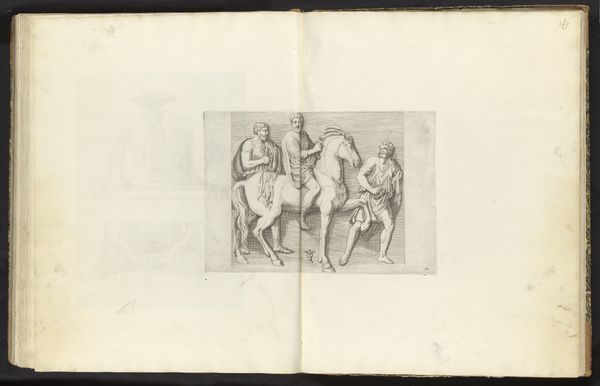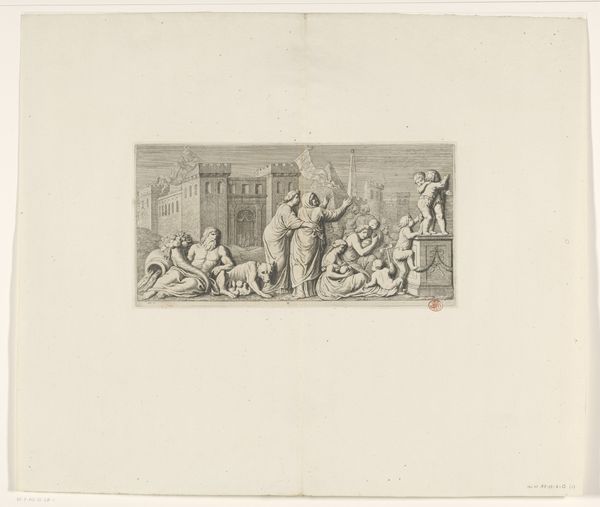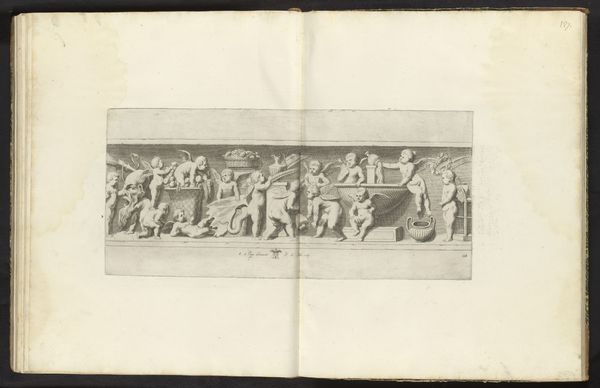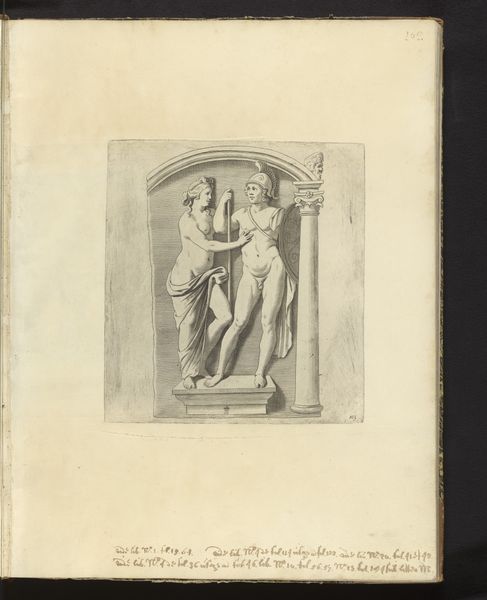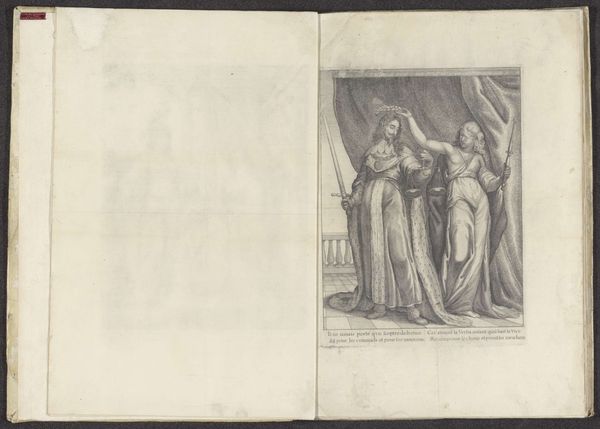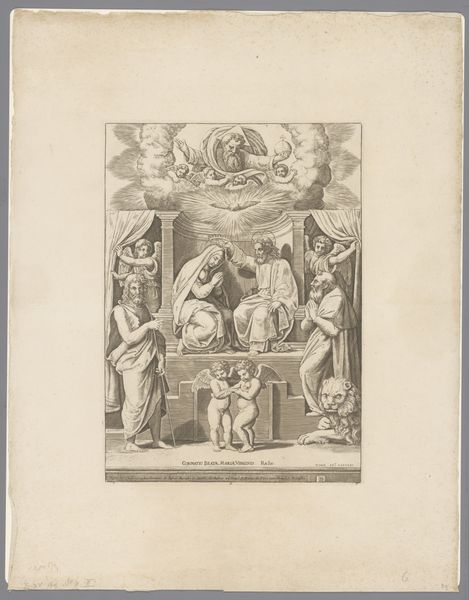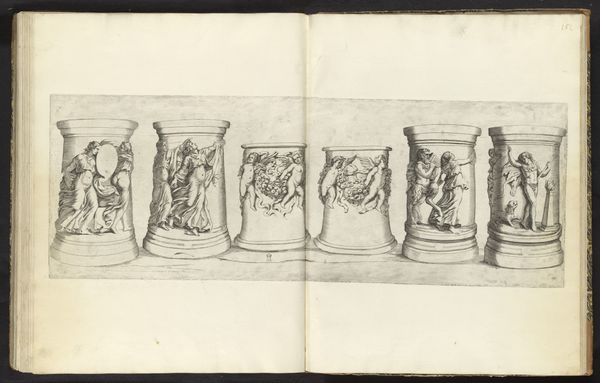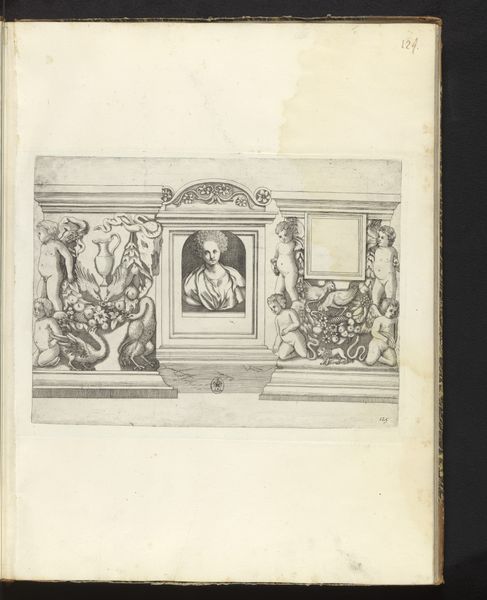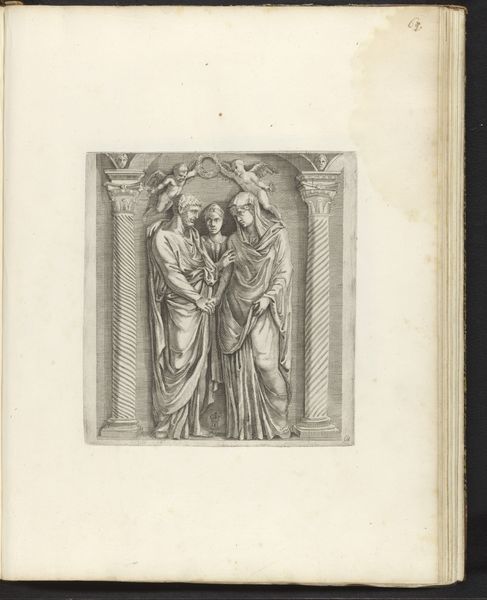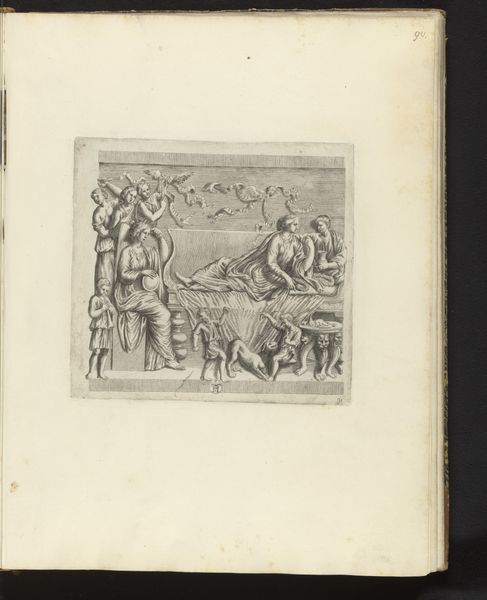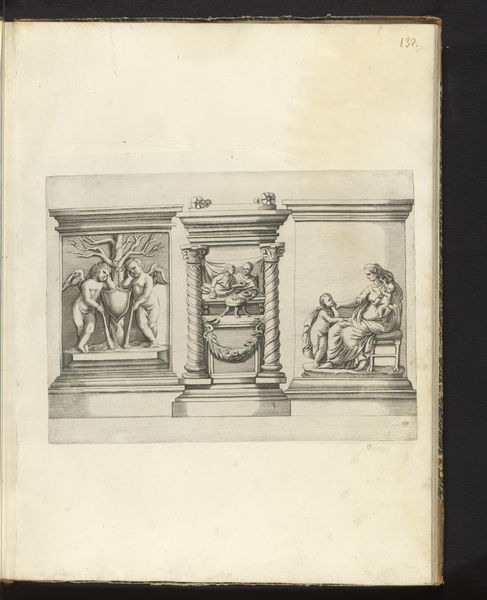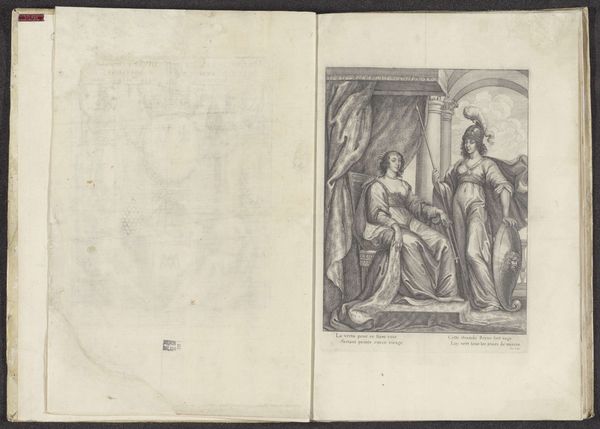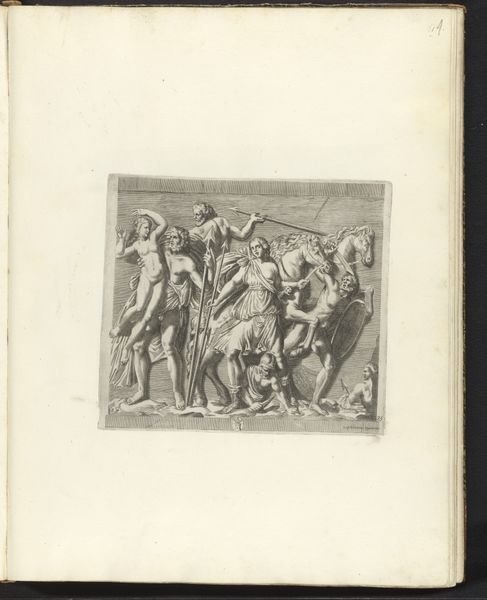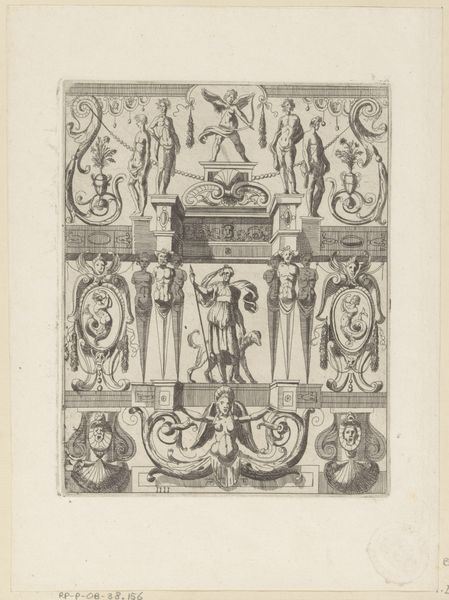
drawing, print, etching, intaglio, engraving
#
drawing
#
baroque
# print
#
etching
#
intaglio
#
figuration
#
line
#
genre-painting
#
history-painting
#
engraving
Dimensions: height 236 mm, width 360 mm
Copyright: Rijks Museum: Open Domain
Curator: This intaglio print, made between 1636 and 1647, is titled "Bas-relief met een keuken" and currently resides in the Rijksmuseum. It’s an etching with engraving. The author is Gabriel Ladame. What do you see? Editor: I find it a bit macabre, honestly. The hanging fowl evoke a visceral response. It’s almost like a butcher shop rendered in a rather elegant, refined way. Curator: Let’s consider the conditions of production for such an image. Ladame’s choice of etching and engraving – processes requiring specialized workshops and skilled labor – reflects a clear hierarchy of art production, and suggests an audience capable of appreciating not just the image but the skill embodied in its crafting. Editor: Yes, but this depiction of a kitchen also brings forward questions of access and social stratification during that time. Who is represented here, and, importantly, who *isn't*? Are we looking at the labor conditions of kitchen staff or simply the spoils of aristocratic life presented as daily ritual? The positioning of those fowl, lifeless and displayed as decorative objects... Curator: A point well taken. Perhaps the print is pointing to the social rituals embedded in the material consumption of food during the Baroque era. We can even imagine how an engraving functions to standardize this image of consumption in a reproducible and ultimately marketable form. This piece reminds us how art production is deeply connected to the social and economic fabrics of its time. Editor: It's an unsettling intersection of culinary and cultural politics; these power structures affect our experience of accessing nourishment to this very day. We see it replicated globally! These elements invite contemporary audiences to reconsider the foodways they participate in today, especially where consumption meets economic and social injustice. Curator: Your observations about the intersection of representation and access help deepen our awareness and complicate initial readings, connecting a historical artwork to urgent, contemporary conversations about class, foodways and economic disparities. Editor: Agreed. Examining "Bas-reliëf met een keuken" reveals the politics in everyday settings. What we choose to immortalize reflects a collective power structure.
Comments
No comments
Be the first to comment and join the conversation on the ultimate creative platform.
